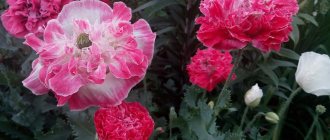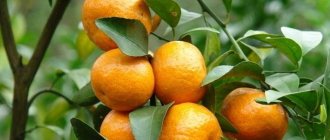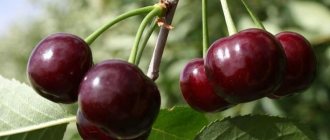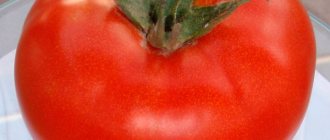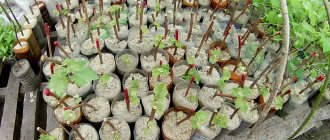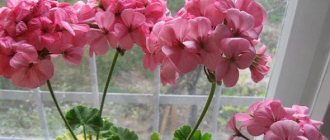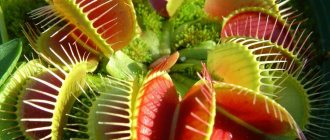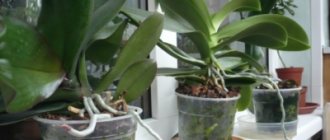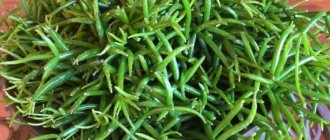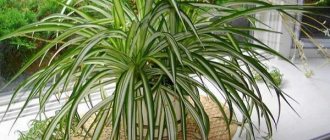Gomphrena is a typical representative of the Amaranth family. Under natural conditions it grows in tropical forests, mainly in South and North America.
The first to describe the culture was the French botanist Delachen, who pointed out that the plant owes its name to Pliny. It was under this name that Carl Linnaeus entered it into the general register. The genus includes more than 100 species; some varieties are cultivated by gardeners as indoor plants, but mainly gomphrena is used as a decorative garden flower. In Asian countries it is used in cooking.
Type of gomphrena globular
Gomphrena globulus is often used as an ornamental plant. This subspecies is valued for its spherical inflorescences, reaching a diameter of 4 cm. The plant is a bush up to 35-40 cm high with thick green leaves, which in some species are covered with bluish down.
During the periods between flowering, the plant looks inconspicuous, but everything changes with the appearance of flowers, which are painted in bright tones of red and purple, yellow and violet, etc. The plant blooms tirelessly from June until the first frost.
Medicinal properties
Gomphrena is not only an excellent ornamental plant, but also has medicinal properties. It is used by traditional medicine in many countries in the treatment of cough, bronchitis, tuberculosis, helps strengthen the immune system, and restore strength after a long or serious illness. Medicinal products (decoction, flower tea) cleanse the circulatory system and liver, remove toxic substances from the body, and charge the body with vitamins.
How to prepare a decoction: take 2 tablespoons of dried flowers, pour 300-400 milliliters of boiling water and let it brew for 7-10 minutes. The drink has a slight sweetish taste and can be drunk warm or chilled.
To prepare flower tea, you need 1 tablespoon of dried flowers, which can be added to a teapot with regular black or green tea, pour boiling water (about 300 ml). Drink it 2-2 times a day.
Among more than a hundred species, Gomphrenas cultivate some of them culturally. Each of them is unique and good in its own way, and many varieties have been developed.
Gomphrena globosa
Gomphrena globosa photo
The most popular type of gomphrena. An annual plant with erect, highly branching shoots, the height of the bush is about 35 cm (in warm southern regions it stretches up to 70 cm). The leaves, about 10 cm long, densely cover the stems and are covered with gray hair. The color range of inflorescences includes white, cream, red, purple, and orange shades. The diameter of the ball is about 6 cm. There is a dwarf variety (Gomphrena globosa var. nana compacta) 15 cm high, inflorescences white and red.
Varieties bred by breeders:
White globular gomphrena in the photo is the variety Gomphrena globosa 'Ping Pong White'
Buddy White – snow-white inflorescences;
Baddy Purpur – shade of purple inflorescences;
Baddy Rosea – light pink flowers;
Pixie Mix - lilac-pink or white-cream inflorescences.
All bushes are dwarf (15 cm high), with the cutest ball inflorescences with a diameter of 4 cm.
Gomphrena purpurea
Gomphrena purpurea photo in the garden
A beauty with purple inflorescences forms a silky mat. Stems reach a height of 30 cm, erect.
Strawberry Gomphrena
Gomphrena strawberry meadow photo
The plant has half-meter stems. The name of the species is given due to the spherical inflorescences of red color, reminiscent of the mentioned berry. The planting on the site looks like a strawberry meadow.
Gomphrena dispersa
Gomphrena dispersa photo
It differs from other species in that it has stems that spread and “scatter” across the ground; one bush can cover an area of 1 m². When grown in a pot, they hang beautifully and take on a weeping appearance. Against the background of a green rug, inflorescences of an orange-golden hue look harmonious.
Pink Pinhea is the most remarkable variety of the species; the inflorescences are full of bright pink.
Gomphrena Haage or golden-flowered Gomphrena haageana
Perennial gomphrena with a stem height of 30-40 cm. Leaf blades are elongated. The inflorescences are large, bright orange, with golden tips on the flower petals.
Comfortable conditions for the growth of Gomphrena
In order for gomphrena to bloom with beautiful spherical flowers, you need to plant it in well-lit and sun-warmed areas. Usually Gomphrena is planted in combination with other sun-loving flowers. The plant belongs to the genus of dried flowers, but at the same time it is afraid of strong drafts and wind, which is why they choose a cozy, closed place for planting. There are no special soil requirements, so gardeners can use any loose and fertile soil.
If the plant is planted in pots to decorate indoor spaces, then in this case universal types of earthen mixture are used, and the flowerpots are placed next to those windows where the sun shines the longest during the day. When selecting soil, pay attention to species consisting in equal parts of sand and turf, peat and leaf humus.
Conditions for growth and formation of gomphrene
As can be seen from the current narrative, gomphrena is a heat-loving exotic
, and this is already a reason to cultivate it in compliance with certain rules and principles. First of all, let's consider what conditions must be provided for this plant for its successful existence.
- Lighting. The container with gomphrene should be placed on western, eastern, southwestern and southeastern windows, that is, in a place with a sufficient number of light rays of the sun.
- Heat mode. The heat of the gomphrene is not to your liking. Comfortable air temperature for growing exotic annuals is +20? C. Frosts for the “flower of immortality” are destructive, even if they are barely noticeable.
- Air humidity. A tropical plant does not require a very high moisture content in the atmosphere around it. But the latter should be sufficient - after all, gomphrena comes from tropical regions. It is unwise to spray the plant with a spray bottle, because the leaves of the exotic plant are covered, as you already know, with fluff. It’s better to place a pot of gomphrena in a hot summer in a tray filled with wet pebbles or expanded clay concrete.
- Container and soil for planting. Exotic soil needs loose soil, without excess nitrogen, with a neutral pH. The plant does not make any special claims to the good composition of the soil mixture; the main thing is that the substrate is not acidic and has light weight. You can add a little compost to ordinary leaf or turf soil. A good drainage layer is desirable at the bottom of the pot.
Photo: gomphrena
Planting a plant
Gomphrena is afraid of acidic environments. Therefore, you cannot add fresh organic matter or compost to the soil before planting. Fertilization with fresh manure is allowed 12-18 months before planting. If you need to plant already, then do the following:
- the soil is dug up;
- choose stones and weeds;
- add sand;
- apply mineral fertilizers.
Planting is carried out in May-June, when the soil has warmed up sufficiently, and a distance of approximately 25 cm is maintained between plants. Once planting is completed, the plants are watered abundantly.
Types and varieties
Only 3 types of gomphrena are grown in garden culture, although in nature there are about 100 of them. Meet:
- Gomphrena globulus is the most famous representative of the genus in floriculture. This is an annual plant from the group of dried flowers, which during the process of growth forms a rounded, highly branched bush 30–35 cm high. The leaves are petiolate, pubescent, elongated elliptical. Inflorescence heads with a diameter of 3–4 cm are collected from small carnation-shaped flowers of pink, white or purple color. The best varieties: Fireworks, Pompom, Gnome (series), Pixie mix, Raspberry Berry, Globoza, etc.
- Gomphrena disseminated - this annual differs from the previous species by creeping or drooping shoots that tightly cover the soil. Thanks to this ability, one plant can occupy up to 1 m² of planting area.
- Gomphrena Hage is the most heat-loving of the garden gomphrenas, so it is not always possible to achieve its flowering in the open ground of the middle zone. A compact bush 35–45 cm high with elongated leaves and elegant capitate inflorescences, painted in golden-orange or scarlet-red tones.
In landscape design, gomphrena is usually grown in borders, ridges, rock gardens and mixborders. Its bright fluffy “cones” look great among the flowers of other annuals: marigolds, nasturtiums, lobelias, petunias, escholcias and godetias.
How to water gomphrena correctly
Since gomphrena belongs to the class of dried flowers, there is no need to worry too much about the timeliness of watering. The plant feels great even in arid areas without watering, but in this case, during the flowering period, the inflorescences will be small and sparse. To achieve the appearance of beautiful flowers, you must not forget about regular watering 2-3 times a week.
For potted species of gomphrena, as for other annuals, it is required that the soil constantly maintain moisture. However, in cases where there is no one to water for some time, there is no need to worry about the plant, because it can easily withstand short drying of the substrate.
Caring for gomphrena in the garden
If gomphrena has taken root, caring for the plants will be easy. In addition to traditional watering, loosening and fertilizing, timely pruning will also be required. Gomphrena flowers are suitable for cutting. You don't need pruners for this - the stem can be easily broken off at the base or in the axils between paired leaves. The more often they are renewed, the thicker the bush will be and the more abundant the flowering.
The plant loves light. If there are tall flowers nearby that can shade it, you can’t count on active flowering. Most often you can find a mixture of seeds of different varieties on sale; it is possible to arrange bright fireworks in the flowerbed.
Growing gomphrena in your garden plot is relatively simple.
How to water and feed
It is recommended to water flowers only during prolonged drought, but even in this case moderation must be observed. Gomphrena is a drought-resistant crop and can easily tolerate a lack of moisture. If there is excess water in the soil, especially in cold weather, fungal diseases are possible.
If the summer is rainy, you need to loosen the soil more often, removing weeds.
Feed moderately: excess nitrogen in the soil will provoke the growth of green mass - it inhibits active flowering. Typically, complex liquid fertilizers are applied twice, but always before the flowering phase.
How to fertilize gomphrena
The plant does not need special feeding if high-quality soil is initially selected for it. If gomphrena is planted in soil that is poor in useful microelements, then in this case it is necessary to fertilize three times:
- the first time 25-30 days after disembarkation;
- the second time at the moment the buds appear;
- the third time 25-30 days after the first flowers appear.
If gomphrena is grown for commercial purposes, then mineral fertilizers are added during the period of active growth.
Important: under no circumstances should the plant be fertilized with organic matter, as it oxidizes the soil, which leads to the death of gomphrena. If the plant was originally planted in soil with high acidity, then lime, which is sprinkled on the ground before watering, will help correct the situation.
Potted types of gomphrena require fertilizing, which begins in early June. To help the plant, store-bought complex mineral fertilizers are used, adding them to the soil once every two weeks.
Planting seedlings in the ground
Plants are transplanted into the flowerbed after spring frosts have stopped completely. The earth will have already warmed up by this time. Usually this is the end of May - beginning of June.
For a flower garden, choose a well-lit area protected from the wind. The optimal soil composition is close to neutral, with a minimum concentration of fertilizers.
Planting Gomphren in the ground
Landing rules
Before planting seedlings, the area is dug up, but not fertilized. After leveling the soil, make planting holes: for tall varieties the distance should be 30-35 cm, for short varieties - 15-20 cm.
The depth should be optimal for transshipment: the seedlings, together with the earthen ball, should fit easily. When handling plants, place them in the center, being careful not to injure the roots.
Fill the free space with soil; the surface around the seedlings must be compacted and watered.
How to trim gomphrena
Gomphrena planted outdoors is not pruned, since formation is necessary only for potted species. If the plant is used for subsequent sale, then after cutting, new flowers grow from the remaining axils.
To make dry bouquets, the plant is cut when the buds are at an early stage of opening, which allows you to get spherical inflorescences of various sizes and shades. However, the greatest beauty is found in fully mature plants. If you plan to prepare gomphrena for bouquets, then you need to cut off the inflorescences before the scales at the bottom of the inflorescences begin to acquire a brown tint.
It is important to know: gomphrena is valued not only for its beauty, because it is actively used in folk medicine to strengthen the immune system.
Cutting
Flowers can be cut at any stage of flower opening, the main thing is not to cut when brown scales appear on the flowers. In general, gomphrena is not afraid of formation, but it is usually carried out for potted plants. It is best to give complete freedom to a plant growing in open ground.
Gomphrena is often used for decoration. These dried flowers can last for a very long time, even without water.
Different varieties of cut gomphrena.
Pest and disease control
One of the main advantages of gomphrena is its resistance to diseases and pests. If the plant is not in overly moist soil in the early stages, then it grows healthy and does not require additional care or treatment. The situation is the same with pests, most of which are not at all dangerous to the plant.
However, the appearance can be ruined by aphids if the colony is allowed to multiply intensively. To combat parasites, use any effective insecticide that is recommended in country stores.
Possible problems
Like all plants, gomphrena can be affected by various diseases. This is not always due to poor care. Basically, a flower can suffer:
- from aphid attack;
- from fungal diseases;
- from cercosporiosis.
Aphids rarely attack gomphrena. But if this happens, then the affected plant can either be treated with an aqueous solution of ash (ash is dissolved in water), or you can buy an insecticide at a gardening store. It must be used in accordance with the instructions.
Cercosporiosis is called "leaf spot." This type of fungus affects many plants, causing severe deformation of the stem and spots on the leaves. Sick flowers must be treated with a fungicidal preparation.
How does gomphrena reproduce?
Gomphrena reproduces exclusively by seeds. Planting is carried out both by sowing seeds in open ground and by pre-germinating seedlings. The latter method is justified in regions where the soil warms up only by June. In this case, planting seedlings at the beginning of summer allows you to quickly obtain a flowering period in order to enjoy the sight of beautiful flowers.
If you plant the seeds in June, then the flowers will appear at the end of September or October. For these reasons, in regions with harsh cold climates, planting through seedlings is practiced, for which the seeds are sown in the second half of March or early April.
For seedlings, take a substrate of fertile earthen mixtures, which is pre-disinfected by pouring boiling water. The seeds are planted shallow and thick and then covered with plastic to maintain warmth and humidity. It is important not to overdo it, so as not to create too high a temperature. It is optimal to maintain 17-20 degrees Celsius, avoiding direct sunlight.
It is allowed to place seedlings in the sun after the first shoots emerge. The picking process is carried out as it grows, about 2 weeks after the first shoots appear. The plant easily tolerates transplantation, so it is grown in a way that is convenient for the gardener. Gomphrena is planted in open ground when the threat of frost has passed.
Gomphrena is an unpretentious and beautiful plant that pleases with a long flowering period and beautiful bright inflorescences. Gomphrena is perfect for growing by novice gardeners who are not used to regularly caring for flowers and providing them with special conditions for development.
Gomphrena - growing from seeds
In our conditions, this plant can only be grown by seedlings. Annuals are used for this. In the ground, germination will be low, and the ripening time of this crop is long. Treated seeds are sown in the prepared soil mixture in early March.
Seed material is also prepared in advance - pre-sowing treatment can take a week and a half.
Every morning for three days, the seeds are soaked in warm water. It is convenient to do this in a glass container. On the fourth day, the water is drained, the seed is filtered through a strainer and washed in running water. The swollen seeds are again placed in a jar with a lid and kept for a week without water on the bottom shelf of the refrigerator.
Features of sowing
Soil composition for growing seedlings: coarse sand (or vermiculite) plus universal soil, which is used for vegetable seedlings. The substrate must be well watered so that it is moistened, but not in excess.
Containers or cassettes are filled with the prepared soil mixture. After compaction, the soil must be watered again. This condition is mandatory, since the next watering will not be soon.
Take the cooled seeds out of the jar, distribute them evenly on the surface and press them to the ground. The top of the containers should be covered with glass or film and placed in the most illuminated place. It is better if the light is not bright, but diffused. The optimal room temperature is 20-22 degrees.
The first shoots can be expected in 15-18 days. To speed up germination by 5-6 times, use bottom heating. When sprouts appear, remove the glass. If all the seedlings grow in one container, then three weeks after the sprouts appear, they should be planted in individual cups with a diameter of at least 50-70 mm.
Growing gomphren by propagating seedlings
After the seedlings get over the disease and take root, water them with a weak solution of mineral fertilizer. Maintain optimal soil moisture to prevent root rot. In order for the root system to breathe, the soil in the pots must be loosened.
If signs of any disease appear, all affected plants must be removed and the soil sprinkled with ash. Stop watering temporarily.
Collecting seeds
The first buds ripen by the end of August. These are, as a rule, central shoots. You need to select the largest of them and tie them with gauze, since the seeds easily fall to the ground. After this, the shoots are cut off and placed in a well-ventilated place until the balls are completely dry. After this, you can husk the grains, which are located in the lower cells.
You need to collect flowers for seeds with a reserve, since dummies are often found among them.
Popular varieties of gomphrena with photos
The spherical form is not the only representative of the genus. In addition to the classic variety, there are creeping, dwarf, and other interesting forms and subspecies.
Dwarf varieties
All low-growing varieties are annuals. They rarely rise above 15 cm in height. As a rule, their buds have a slightly elongated, but the same round shape and the same 4 cm in diameter. They tolerate dry weather very well and combine well with many other garden annuals.
Gomphrena purpurea
The name itself speaks for the color of this variety. Blooms brightly and noticeably. The stems stretch up to 30 cm in height. From a distance, planting this gomphrena resembles a strawberry bed with ripe berries. She feels very good in the potty too.
Strawberry Gomphrena
The red inflorescences of this beauty can be confused with strawberries even at a closer distance. The species is tall; shoots can reach half a meter in height. For this variety it is necessary to choose well-lit places with loose soil.
Gomphrena absent-minded
The inflorescences resemble large pins, the shoots are creeping and ampelous, thanks to which they are successfully grown as a potted crop. The color of the flowers is variegated, orange-golden, white-pink, and other decorative varieties have been bred. The species is very demanding of good lighting.
Gomphrena goldenflower
The variety is also called Haage. Medium-sized, up to 40 cm, with elongated leaf blades and relatively large buds. Also demanding of the sun, loves open places. It is not fussy to care for and can easily tolerate dry summers.
On sale you can often find gomphrena seeds in a mixture of varieties and colors, which makes it possible to grow an incredibly colorful decorative meadow for a cheerful country mood.
Diseases and insects
Gomphrena flower: plant photo
The Gomphrena plant may be susceptible to disease if water stagnates in the soil. It is important to note the fact that the plant has good immunity against various diseases and insects. It is very rare to find aphids, which can appear on a plant after moving from a neighboring bush. To combat aphids, special insecticides are used. Using traditional methods will have little effect.
Care
Watering
Gomphrena is drought-resistant. It can survive a long absence of precipitation without loss. Water it regularly, but moderately. The soil around the bush should be moist, but not wet. After watering and drying of the top layer, the soil around the bushes is loosened to get rid of weeds and improve air exchange in the soil.
Top dressing
For fertilizing, complex mineral fertilizers with microelements for flowering plants are used. Gomphrena needs nutrition at the stage of growing seedlings and growing young plants before flowering. It is undesirable to use fresh organic fertilizers - this will negatively affect flowering.
After planting the seedlings in a permanent place, the first fertilizing is carried out no earlier than 10 days later. In the future, gomphrena is fertilized once every 10–14 days. When flowering begins, fertilizing is stopped.
Transfer
The plant is not afraid of transplantation. After picking and planting in open ground, young seedlings quickly take root and grow, even if the roots have been damaged.
In autumn, faded plants are removed from the beds. They are not replanted for winter keeping indoors.
Trimming
Gomphrena in the garden
Gomphrena tolerates pruning well. Removing faded inflorescences stimulates the appearance of new lateral flower stalks. In Gomphrena Hage, growth is controlled by pruning long stems.
For drying, gomphrena is cut off when it is in full bloom, but before the natural wilting and darkening of the flower scales begins. Cut shoots with flowers are collected in bunches of 10–12 pieces, tied and hung with baskets down. Dry gomphrena in the shade, in a dry room with good ventilation. Depending on the air temperature, the drying process will take 14-30 days.
Collecting seeds
The seeds ripen by September. It is better to collect them from the first inflorescences in dry weather. Large flowers are cut, laid out indoors on paper and dried. Then the dried flower balls are taken apart. The seeds are located in the cavity of the flower scales. Stores sell already peeled seeds, and those collected from your own plants can be stored and sown without removing them from the scales. This will not affect germination. The freshness of the seeds is more important for germination. Seeds retain maximum germination for 2-3 years.
Gomphrena: description of the flower
Gomphrena flower: plant photo
Gomphrena is a flowering plant that belongs to the Amaranthaceae family. In the wild it can be found in the tropical zone of the Southern and Northern Hemispheres. In the regions of South America you can most often find this amazing plant. The genus includes more than 100 plant species, most of which are cultivated as indoor plants. Features of the variety. gomphrena is a herbaceous plant that can be either perennial or annual. The stems of the plant either stand upright or rise up. The leaf blade is entire, opposite, and can be petiolate or sessile. The inflorescences are capitate in shape, consisting of flowers that are red, pink, blue, white, purple, lilac or yellow in color, which is often uneven. The fruit has the appearance of an unopened achene, inside of which there are smooth seeds with a flattened shape. For middle latitudes, perennial plants are cultivated as annuals. The Gomphrena plant is easy to care for and has high decorative qualities.

